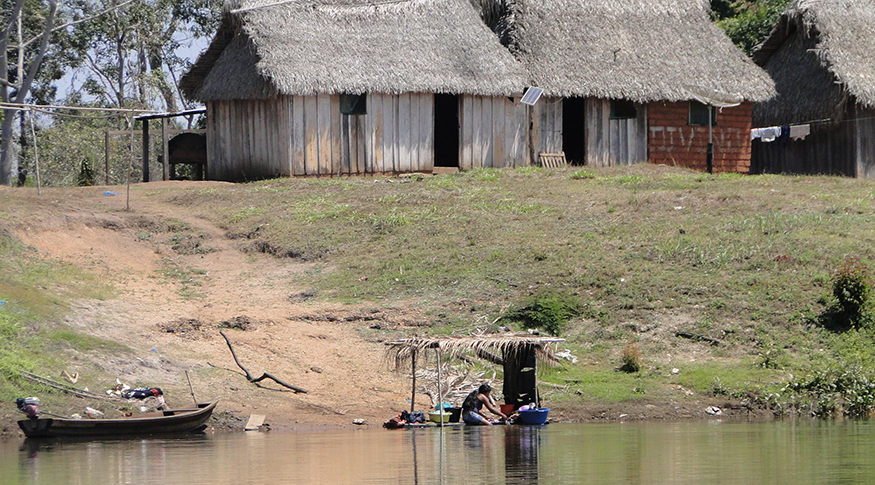RBG
Brazilian Journal of Geography presents challenges mapping areas of Indigenous and Quilombola peoples
April 28, 2021 10h00 AM | Last Updated: April 28, 2021 05h28 PM
Highlights
- New edition of RBG brings on the cover the article "Geographies come together in the census mapping of Indigenous and Quilombola areas".
- The Journal also presents the article "Mobility in the Metropolitan Area of Rio de Janeiro and waterway transportation", addressing the potential of Guanabara Bay.
- In the Essay "Historical Geography - a note", geographer Roberto Lobato Corrêa proposes topics for academic research in the area.
The IBGE releases today (April 28) the second issue of volume 65 of the Brazilian Journal of Geography (RBG), published on a six-month basis. The new edition, in digital format, brings two articles and a essay, addressing three different topics: mapping of Indigenous and Quilombola areas, waterway transportation in the Guanabara Bay (RJ) and reflections upon Historical Geography.
“This issue keeps the RGB tradition of establishing a dialogue between academic studies and IBGE surveys”, emphasizes journal editor Mr. Bruno Hidalgo. “In this edition, we bring the the work of researchers of high-intensity production recently in the Institute, as well as the thoughts of a great Geography expert”, he comments.
The article Geographies come together in the census mapping of Indigenous and Quilombola areas, by Mr. Fernando Damasco, manager of Traditional Territories and Protected Areas of the IBGE, and Ms. Marta Antunes, technical coordinator of Traditional Peoples and Communities of the IBGE, presents the methodology used for defining the Indigenous and Quilombola areas for the next Population Census. The authors propose a return to the concept of locality in the enumeration context in Brazil, developed by the IBGE in 1941, and discuss the challenges involved in combining census operational procedures and complex spatial patterns of territory occupation by Indigenous Peoples and Quilombolas.
The solution proposed was the construction of an innovative hybrid spatial pattern for such localities, which can simultaneously consider contiguous occupation areas and household dispersion of such traditional peoples and communities. The conversion of census geography of the NSO and territorial knowledge from leaders and members traditional peoples and communities aimed at new specific territorial divisions emerge as a crucial perspective in the production of public statistics and geography.

The second article deals with the Mobility in the Metropolitan Area of Rio de Janeiro and waterway transportation. The author, Mr. Gabriel Teixeira Barros, operational manager of the Population Census in Rio de Janeiro, gathers a large scope of information on Guanabara Bay and commuting in Rio de Janeiro. The purpose is to discuss the possibilities brought by waterway transportation as an alternative way for a greater metropolitan integration in Rio.
The text also tackles environmental and physical aspects of the Guanabara Bay, as well as historical elements, such as the ports that used to operate in the region and the current metropolitan mobility. “The reading makes us wonder to which extent could the Guanabara Bay become another hub for Rio and neighboring municipalities, exerting a positive impact for commuters”, adds the editor.
At last, in the essay Historical Geography – a note, Mr. Roberto Lobato Corrêa gives food for thought on the field of Historical Geography, indicating time approaches and others which can be applied to the area. As a conclusion, the author – one of the most relevant geographers of the country – includes a list of suggestions for a research agenda. “The proposal made by Mr. Lobato Corrêa summarizes his great knowledge on the Brazilian territory”, guarantees Mr. Hidalgo.
Edited by the IBGE, the RBG is a digital scientific publication released twice a year, in April and in September. Papers can be submitted all over the year by researchers from national and international institutions, including from the IBGE itself.




















